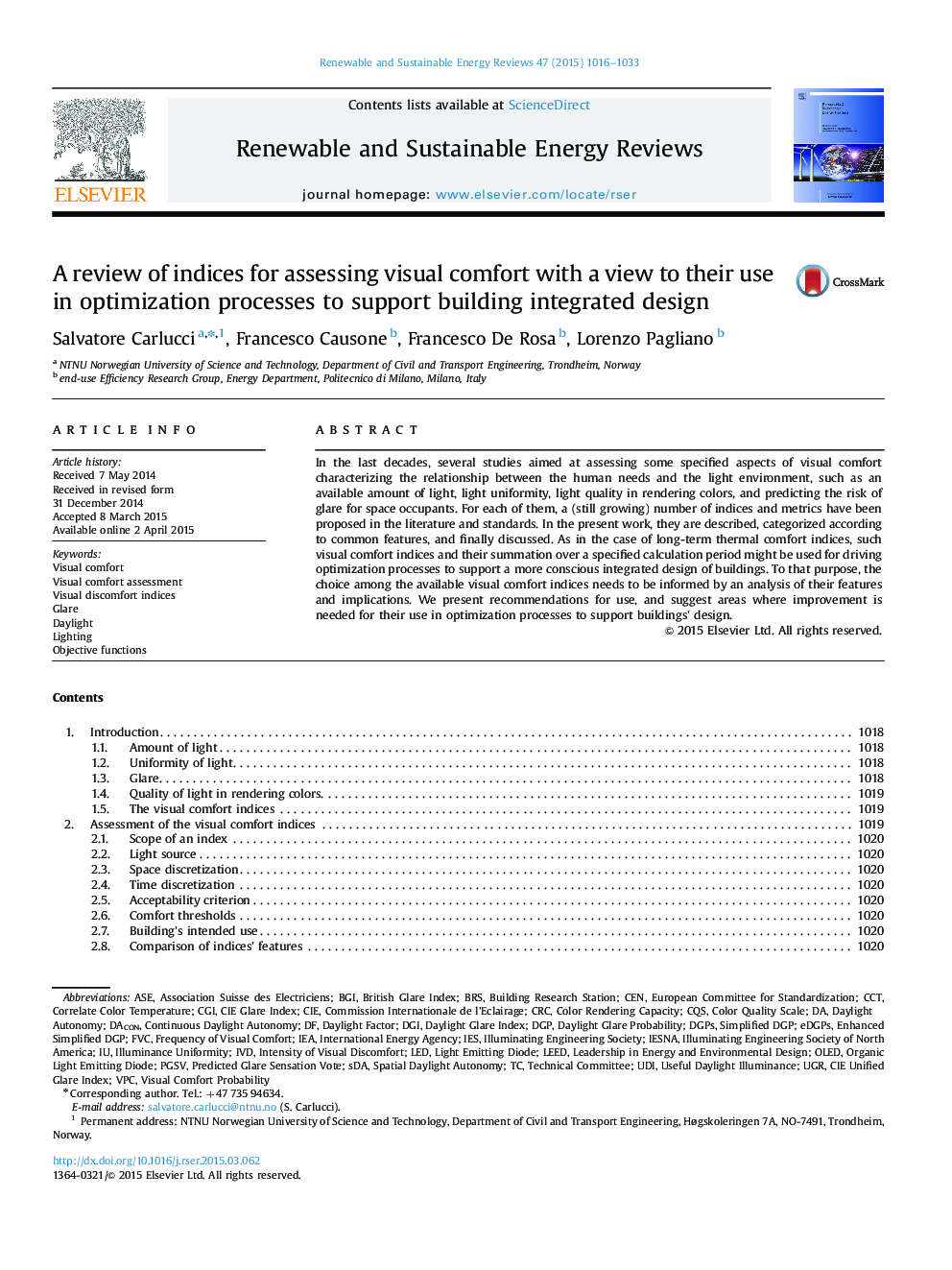| Article ID | Journal | Published Year | Pages | File Type |
|---|---|---|---|---|
| 8116962 | Renewable and Sustainable Energy Reviews | 2015 | 18 Pages |
Abstract
In the last decades, several studies aimed at assessing some specified aspects of visual comfort characterizing the relationship between the human needs and the light environment, such as an available amount of light, light uniformity, light quality in rendering colors, and predicting the risk of glare for space occupants. For each of them, a (still growing) number of indices and metrics have been proposed in the literature and standards. In the present work, they are described, categorized according to common features, and finally discussed. As in the case of long-term thermal comfort indices, such visual comfort indices and their summation over a specified calculation period might be used for driving optimization processes to support a more conscious integrated design of buildings. To that purpose, the choice among the available visual comfort indices needs to be informed by an analysis of their features and implications. We present recommendations for use, and suggest areas where improvement is needed for their use in optimization processes to support buildings׳ design.
Keywords
Spatial daylight autonomyLEEDVPCBGIIVDDGIDGPCGIIESFVCCENBRSDGPSCIETechnical CommitteeASESDACCTIEAOLEDUGRDaylight glare probabilityCQSvisual comfortInternational energy agencyUDIdaylight autonomyGLAREObjective functionsLight emitting diodeOrganic light emitting diodeLEDLeadership in Energy and Environmental DesignLightinguseful daylight illuminanceDaylight glare indexdaylight factorDaylightCRCEuropean Committee for Standardization
Related Topics
Physical Sciences and Engineering
Energy
Renewable Energy, Sustainability and the Environment
Authors
Salvatore Carlucci, Francesco Causone, Francesco De Rosa, Lorenzo Pagliano,
